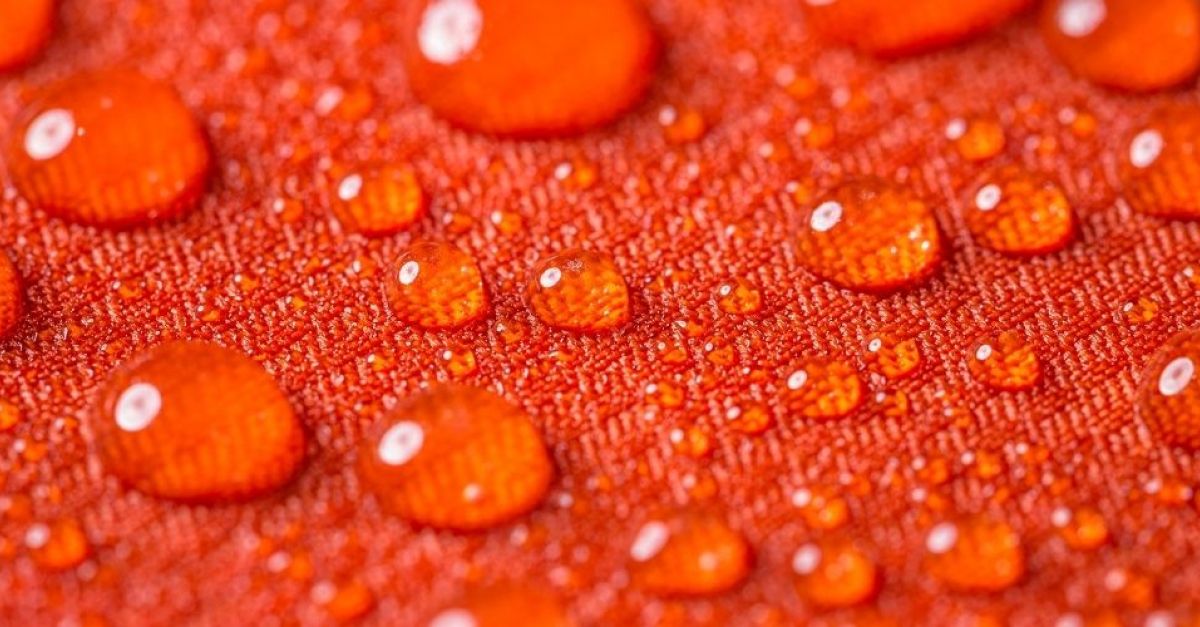
Preventing the unknown
Stopping PFAS from entering the environment and the water cycle is the most effective way of keeping people healthy and our water services affordable
Per-and polyfluoroalkyl substances (PFAS) – or ‘forever chemicals’ - are a group of around 5,000 chemicals that are used to make fluoropolymer coatings and products that resist heat, oil, stains, grease, and water. These fluoropolymer coatings are found in a variety of products (food wrappers, umbrellas, frying pans, paint, some textiles and fire-fighting foam, to name a few) as their water-repelling properties and durability are very useful.
PFAS either are, or degrade to, very persistent chemicals that can accumulate in humans, animals and the environment and may cause adverse effects. They are widely present in the environment, in soil, groundwater or surface water and in food.
Although a Europe-wide quantification of the different routes of human and environmental exposure is not complete, it is estimated that the contribution of PFAS accumulation in humans through food is in the range of 83-98%, and the contribution through drinking water in the range of 2-17%. More recently, inhalation has been identified as another important route.
It is not yet definitively known if all PFAS have a detrimental effect on our health and at which concentrations. Research is ongoing into this. While we are waiting for a definitive answer, it is better to be cautious – in line with the Precautionary Principle - and have a total ban on these chemicals. Why do we call for such drastic measures?
First of all, some PFAS have been proven to be toxic, while for the rest there are so many unknowns regarding their impact on health and the environment. For some of these substances, the tolerable weekly intake has been reduced by several orders of magnitude. We cannot exclude today that the same will happen with other PFAS.
Secondly, PFAS pose a problem for water operators precisely due to their very persistent and very mobile (vPvM) qualities.
In the absence of effective control-at-source measures, PFAS are released to the environment through multiple pathways and, locally, may reach drinking water resources. Due to their persistency, concentrations are likely to increase for the years to come and drinking water suppliers will have to resort to costly extra-treatment measures to comply with the limits values set in the 2020 Drinking Water Directive or national regulations.
The applicability of advanced (industrial) technologies to remove PFAS from our drinking water, based on physical separation or destruction techniques, is currently being investigated in pilot projects in laboratories. The results indicate that the large scale removal of PFAS in water treatment plants will not be economically nor environmentally viable.
Thirdly, waste water treatment plants (WWTP) are currently not equipped to remove PFAS from waste water. PFAS are very resistant to biological treatment, and as a result, can end up in the WWTP effluent or in sewage sludge. Moreover, the very persistent perfluoroalkyl acids (PFAA, such as PFOS and PFOA) appear to be produced during the biological treatment process in the WWTP following the degradation of precursor compounds. The waste water sector is also investigating methods to effectively and affordably remove PFAS. Even more than for drinking water technologies, this is proving to be difficult, ineffective and costly.
PFAS producers and users are moving towards short-chain PFAS, as they are generally considered less toxic. But experience shows that current treatment technologies are far less effective in removing short-chain PFAS from water.
Preventing PFAS from entering WWTP through control-at-source measures is the only way to avoid PFAS from being released to the (aquatic) environment through this pathway. A far-reaching ban of all PFAS uses is a very important first step. In addition, a coherent regulatory framework with clear instruments covering all persistent, mobile, toxic (PMT) and very persistent, very mobile (vPvM) substances needs to be in place to prevent the emission of these substances to the water cycle.
And there is a fourth reason to call for a rapid phase-out of all PFAS uses. The EU has so far failed to implement the polluter-pays principle enshrined in the TFEU and emphasised in the Chemicals Strategy for Sustainability and the Zero Pollution Action Plan. The cost for extra water treatment or for the development of new, uncontaminated drinking water wells is not borne by those who sell PFAS, but by the water consumer.
The EU institutions have a golden opportunity to make a lasting impact on human health and in environmental protection through the Zero Pollution Action Plan (ZPAP). The ZPAP intends to achieve no pollution from “all sources”, cleaning the air, water and soil by 2050. It should go beyond a monitoring exercise and should take actions to reduce pollution at the source. Banning PFAS and making the polluters pay would be a major achievement.
Links to key positions and briefings
- Position paper on PFAS in the urban water cycle (2022 update)
- Briefing note on drinking water and PFAS
- Briefing note on waste water and PFAS
- Briefing note on treating micropollutants at the waste water treatment plant
- Position paper on the holistic approach to addressing micropollutants - 2019 update of source control
- Briefing note on moving forward on PMT and vPvM substances
- Deloitte Study on the Feasibility of Applying Extended Producer Responsibility to Micropollutants and Microplastics Emitted in the Aquatic Environment From Products During Their Life Cycle
EurEau, PFAS, control at source, polluter pays principle, water europe, cycle, forever chemicals, vPvM
- Created on .